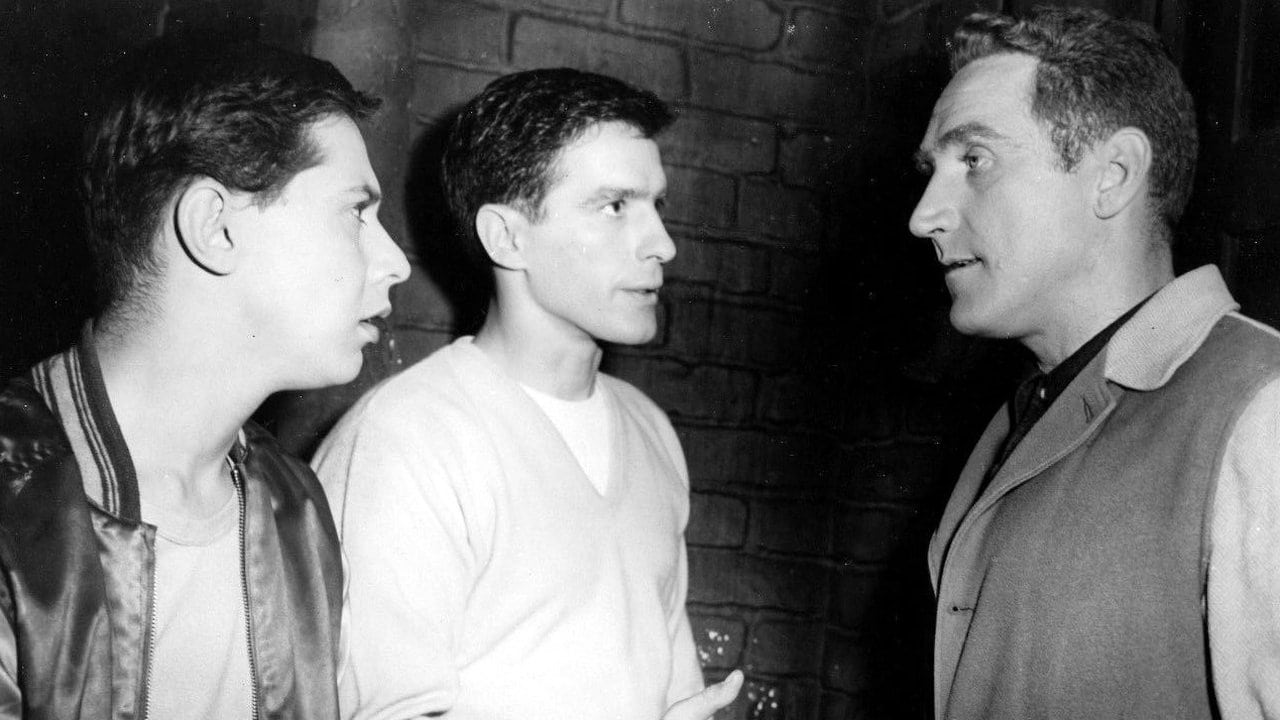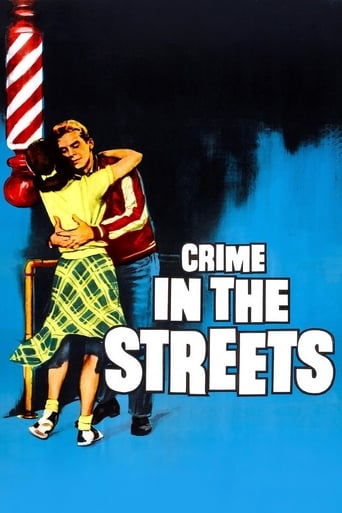TrueJoshNight
Truly Dreadful Film
Kailansorac
Clever, believable, and super fun to watch. It totally has replay value.
BelSports
This is a coming of age storyline that you've seen in one form or another for decades. It takes a truly unique voice to make yet another one worth watching.
Brooklynn
There's a more than satisfactory amount of boom-boom in the movie's trim running time.
JohnHowardReid
All aboard for cheesy sets and a lot of unconvincing talk, talk, talk with the usual stock characters and stock situations.James Whitmore, badly miscast, is a dead weight. Cassavetes is all sub-Brando method acting, but Sal Mineo is bit more with-it than usual.Nonetheless, the only really impressive performance is offered by Mark Rydell. On the negative side, production values are extremely crummy. Don Siegel, Sam Leavit, amd Franz Waxman should hang their heads in shame for respectively contributing such uninspired direction, plodding photography, and a pedestrian music score.And as for art director Serge Kriznan, he should be drummed out of town. Or maybe the shabby sets were entirely the fault of penny-pinching producer Vincent M. Fennelly?
blanche-2
We've always had juvenile delinquents, but post-war, teenagers in and making trouble became great fodder for Hollywood. There were a rash of films about angry, mean teens: Rebel without a Cause, Blackboard Jungle, So Young, So Bad, High School Confidential, Blue Denim, etc., etc. Was it because kids' fathers didn't return from the war and their mothers had to work? Poverty? I'm not a sociologist, so I can't say. But JD became a big topic.This film, "Crime in the Streets," from 1956, is a low-budget, black and white movie about a bunch of mean kids in a bad neighborhood. The film's titular star was James Whitmore as a social worker running a community center. But "Crime in the Streets" "introduced" a mainly TV actor, John Cassavetes. He had had bit parts in a couple of films; this was his first main role. Don't ask me how he did it, but from 1956 until a Columbo episode in 1974, he didn't change a bit. The film also features Sal Mineo, future director Mark Rydell, Virginia Gregg, and Denise Alexander, who has appeared on General Hospital on and off for the past 38 years. Here's she's a teenager.The story focuses in on one family, the Danes, which includes Frankie (Cassavetes), his little brother Richie, and their mom (Gregg). Frankie is out of control, hanging out in the neighborhood with his buddies until all hours, refusing to get a job, and totally alienated from his mother. He's incredibly angry and at one point, he plans to kill a neighbor he hates and tries to get his friends to come along with him.This is pretty dreary stuff that looks like an old TV show, done on a sound stage. The acting is good, but neither Whitmore nor Cassavetes has that much to do to display their talent.Very ordinary, and not inspired. Directed by Don Siegel, who was capable of more.
bkoganbing
Working on a painfully thin budget from Allied Artists, Don Siegel managed to fashion an urban tale of violence and juvenile delinquency in Crime In The Streets. The urban sets remind me a lot of Otto Preminger's The Man With A Golden Arm which came out a year before. And the delinquents aren't romanticized as they are in West Side Story.James Whitmore stars as a local social worker working out of a settlement house who keeps his ear to the ground for any rumblings of a rumble on the mean streets of his urban neighborhood. With two gangs, the Hornets and the Dukes, he's got his hands full. It's the Hornets here that concern the viewer of Crime In The Streets. They have a charismatic leader in young John Cassavetes who at 27 is way too old to be playing an 18 year old, but so did most of the kids look way too old in Glenn Ford's class in The Blackboard Jungle. Cassavetes is repeating his role from this same story made as television drama two years earlier. Also repeating are Mark Rydell as one of Cassavetes lieutenants who really isn't wrapped too tight and Will Kulava as Sal Mineo's father.When local citizen Malcolm Atterbury reports one of their peers for having a zip gun, Cassavetes sets in motion a plan to kill him. Mineo and Rydell are in on it. Whitmore gets wind of it and does what he can to stop it.Don Siegel gets good performances out of his ensemble cast. One player I failed to mention is Virginia Gregg who may have gotten her career role as the mother of Cassavetes and Peter Votrian. Cassavetes she feels is a lost cause, she's concerned about Votrian who idolizes his brother and might get into the gang culture. Gregg is great example of one who was probably a battered wife when she had a husband living in the place and one who is too shell shocked to deal with her rebellious son.Though it's dated Crime In The Streets is still entertaining and it's a good sociological treatise on juvenile delinquency.
mackjay2
CRIME IN THE STREETS is so obviously a message picture that's it's almost painfully didactic in spots, a less-than-classic "Juvenile Delinquent" opus. The worst element is the social worker (James Whitmore_ who tries so desperately to change a clearly deeply disturbed, would-be psychopath Frankie (Cassavetes) with useless talk. It's that talk that nearly kills the movie. Very little happens for long stretches while characters discuss and argue at length. To his credit, Whitmore pulls off his thankless role as well as anyone probably could. Cassavetes has his moments too, but his method style is often distracting and he's clearly too old for the typical 1950s "Juvenile Delinquent" part, despite his boyish looks and short stature. Mark Rydell plays a coded gay part, relayed through stereotyped sweeping gestures, cigarette in hand. He's excited by Frankie's violent talk and volatile personality. The forgotten Virginia Gregg hurls herself into the role of Frankie's downtrodden mother. Immersed in misery and hopelessness, she's inert, and blind to the cause her son's real problem. It's not hard to guess what Frankie's problem is about, many years and many psycho-social films after this film was made. As Frankie's long-suffering little brother, Peter J. Votrian never hits a false note and he successfully carries a couple the film's emotive climaxes. This really is an actor's movie, and two other actors bring to life the film's strongest emotional scene. Will Kuluva, another forgotten talent from the period, gives genuine paternal feeling to his part. But it's Sal Mineo as Kuluva's son, "Baby" who gives the film's truest and most realized performance. Mineo was a real, instinctive, highly gifted actor. In spite of similarities to some of his other roles in this period, he puts a distinctive mark on "Baby" and the viewer is not likely to forget him. If only this film had more energy, more action perhaps, and less talk, it may have had greater impact.

